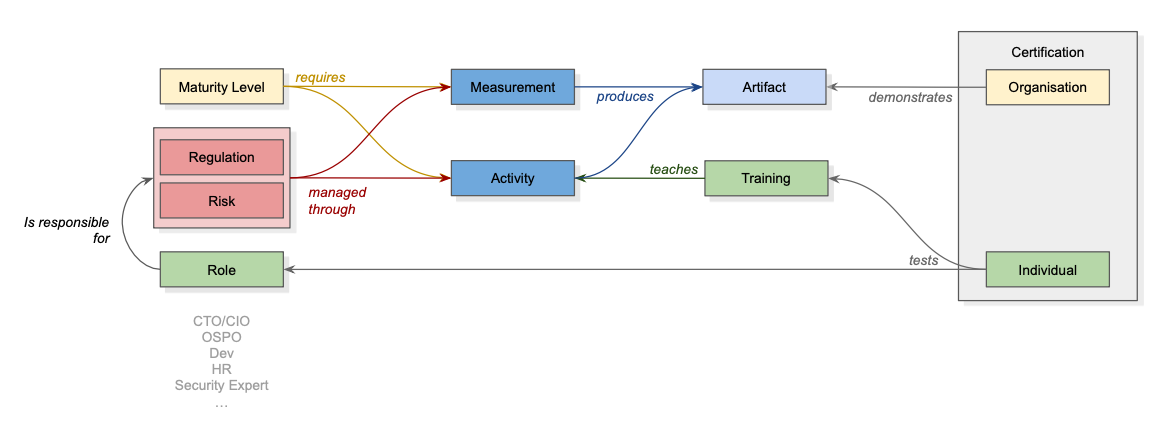The Open Source Body of Knowledge (OSBOK) is a collaborative project aimed at developing a comprehensive body of knowledge on open source software and its ecosystem. It is a community-driven initiative that brings together individuals, organizations, and experts from different fields to contribute their knowledge and experience. The OSBOK project is based on the principle of openness and transparency, with all the content and contributions being made available under open licenses.
The OSBOK project aims to provide a reference point for individuals, organizations, and communities interested in open source software. It is designed to be a comprehensive resource for enterprises looking to consume or contribute to open source software. It covers philosophy of open source, the different types of licenses, best practices for managing open source projects, and the tools and technologies used in open source development. The OSBOK project is expected to facilitate the adoption and growth of open source software within the enterprise and promote a better understanding of the open source ecosystem.
The OSBOK is designed as a collection of interconnecting documents and categories which can be browsed in any order. The following diagram summarizes the information architecture:

Please see the following introductory articles on these areas:
Open Source Activities
This section of the OSBOK describes common activities performed by staff involved in the consumption or contribution of open source software. Where possible, the OSBOK identifies the role performing this activity.
Open Source Artifacts
This section of the OSBOK describes common artifacts either consumed or produced when managing open source software within the enterprise. Artifacts may be machine- or process- generated (such as an SBOM) or the result of human effort (such as an Open Source Strategy).
Open Source Measurements
This section of the OSBOK describes common measurments you might make... tbd.
The Open Source Maturity Model
The Open Source Maturity Model (OSMM) is a framework that helps organizations assess and improve their use of open source software. The primary purpose of the OSMM is to provide a structured way for organizations to evaluate their open source practices and identify areas for improvement. The model consists of a set of maturity levels, each with a defined set of characteristics and activities that an organization must achieve to move to the next level.
Regulation
This section of the body of knowledge looks at the different laws that might apply to the consumption or contribution of open source within regulated industries.
Open Source Risks
This section of the OSBOK breaks down the different types of risks that enterprises face by consuming or contributing to open source software.
Open Source Roles
Different roles within a firm have varying responsibilities towards the effective management of open source software.
Training
This section of the body of knowledge looks at the available training on open source.
